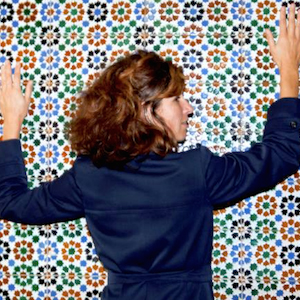In recent years, Rikkert Paauw has captivated audiences with his public space interventions and furniture collections based on design's equivalent to found-footage. The Utrecht-based autodidact cheerfully follows his nose, recovering waste material from the streets, and transforming it in an artistic yet socially responsible way. True to his curious, eager, and quest-filled spirit, he never stands still and these days is evolving much more towards sustainable self-designed furniture, urban research, and architectural work. DAMNº caught up with the Dutch designer to see what he's up to.
"My recuperation work is my way of getting to know cities," says Rikkert Paauw, who is currently refurbishing his own house in Utrecht. Saint Petersburg, Sydney, Brussels, Amsterdam, and Toulon, are just a few of the cities where he has skimmed the streets on his folding bike, collecting waste and old furniture. Paauw has always worked with such found footage, and nearly any kind of material will do – the only exception being "new plastic", which he describes as "badly made loveless mass products" – rubbish for short.

Based on the found and the waste, Paauw creates wonderful furniture and objects that carry the soul of the city in which they were foraged. It is a kind of dérive.
"In Saint Petersburg I collected beautiful veneer pieces," he said. "In Brussels, I found high-quality waste and even luxurious furniture in the streets, as well as a fantastic Eighties metal wire chair that later I found out was from IKEA."

Paauw prefers to work in a context, on assignment. This sometimes yields exciting moments, as his work very much depends on what turns up in the fine-tooth comb of urban life, and in every city, he has to find a suitable workspace where he transforms the discarded into a design.
"Sometimes I go on searching the streets without finding anything suitable for days; still I am supposed to deliver magic by the deadline. That kind of challenge brings a certain stress." Paauw sees his work as an engagement with a place: it's a social statement to collect material that others throw away. "It links me with a city, with a group of people, with a community, with the context of a place."
His creations show a snapshot of a city, too. Through the castaways he found in Brussels, Paauw feels a special bond with the multilayered, cosmopolitan, small Belgian world city that happens to be the capital of Europe. "Brussels is a true paradise for me: a multitude of different architectural styles existing next to each other, an incredible mix of people and languages, the eclectic chaos in public space, and last but not least: the excellent quality of the Brussels locals' litter, all very attractive."
The Brussels harvest is on view on his Instagram, which he considers to be his diary, and was also shown at the first edition of the Collectible fair in Brussels earlier this year by valerie_traan, the Antwerp gallery representing his work. Paauw had a solo exhibition at the gallery in 2017, which was the beginning of his collaboration with its founder, Veerle Wenes, and they plan to organise another solo outing, this time in the Belgian capital, during 2019.
Paauw's journey started in 2010, when he almost accidentally found himself at the Public Design Festival in Milan, due to an open call. Under the wings of his own Foundation Projects, an ongoing concept he started with Jet van Zwieten, among other things, he showed a container converted into a house, along with design pieces made with waste. Everything in the installation was foraged in the streets of Milan, and constructed in a garage around the corner. "Making something that is beautiful, efficient, sustainable, and affordable, with little material, has been my mission ever since." That mission is artistically, socially, and ecologically committed, and sustainability is key for Paauw.
 Photograph by Miles Fishler
Photograph by Miles Fishler
But his work shouldn't be hyped. It was picked up on from his first appearance in Milan, and waste-based furniture and installations became a kind of a visual darling in the design world. "It annoys me that nowadays everyone finds reuse attractive in a superficial, hipster way. The current hype isn't thought through, it's much more about the shape and less about the content." This evolution and the fact he had to dispose of much of his infinite collection of foraged objects and materials in a large sea container due to a move resulted in a different focus. Today, he is less concentrated on public spaces and reuses, and increasingly developing his own sustainable designs.
As he is currently busy with the cupboard of the future, Paauw declares: "I am my own producer, working away on a dream project to make products with small producers." In this way Paauw hopes to change one aspect of the industry, so there is a balance between affordability, quality, and thriving small factories. Taking a critical stance is part of the process, and Paauw's approach is neither dogmatic nor blinkered. It's all about the sense of the individual project and if it's right for him. And such, he enjoys making works "for the happy few".
For example, in June he will create site-specific works for a private collector on a Greek island, a kind of way to bring him back to basics. For Paauw, what is important is that with each commission he grows. Through his design work and current refurbishing project, his interest for architecture was also re-awakened: "I believe in very simple architecture, which is so all-encompassing and complete that one hardly needs any interior." Meanwhile, his urban dérive and quest to create better surroundings, has transformed into research on cities, neighbourhoods, and urban development, and is the main focus of his Foundation Projects. No doubt he will continue to surprise.
Photography is by Piet Albert Goethal, unless otherwise stated.





